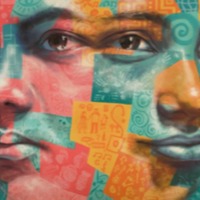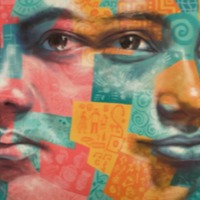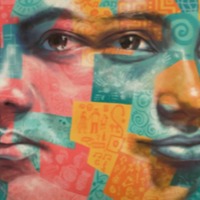
Santino
Thousands of women and children were taken into slavery during the decades of Sudan’s civil war, mainly from Northern Bahr El Ghazal and the Nuba Mountains. Slave-taking was revived in 1985 by the National Islamic government of Sudan primarily as a weapon against counterinsurgents in the South, and secondarily a way to reimburse its surrogate soldiers for neutralizing this threat. In 1989 the government created the Popular Defense Forces (PDF), militia trained to raid villages and take people as slaves. PDF recruits were allowed to keep whoever they captured, along with booty of grain and cattle. One study documents 12,000 abductions by name, while NGOs offer estimates ranging from 15,000 to 200,000. The slaves were often moved to large towns in the north on week-long journeys during which the women were repeatedly raped, and then sold to new masters who used them without pay for farming and sexual services. The peace process brought these PDF abductions to an end, but inter-tribal abductions continue in Southern Sudan. In addition, Sudanese children are used by rebel groups in the ongoing conflict in Darfur; Sudanese boys from the country’s eastern Rashaida tribe continue to be trafficked to the Middle East for use as camel jockeys; the rebel organization “Lord’s Resistance Army” has forcibly conscripted children in Southern Sudan for use as combatants in its war against Uganda; and the institution of chattel slavery continues in southern Darfur and southern Kordofan.Santino was ‘redeemed’ (bought out of slavery) by Christian Solidarity International (CSI), a Zurich-based international human rights organization, in 1999.

Olga
Olga was lured to Israel from Russia by a female acquaintance in 1998. After socialism was dismantled in the USSR in 1991, “transition countries”—nations that moved from socialism to capitalism—saw an explosion in the export of men, women and children as slaves. The US government believes that as many as 100,000 women are trafficked throughout the 15 former Soviet countries annually and sold into international prostitution. Russian women are trafficked to over 50 countries for commercial sexual exploitation, including countries in Central and Western Europe and the Middle East. In Israel, where Olga was trafficked into sex slavery, women are trafficked from Russia, Ukraine, Moldova, Uzbekistan, and Belarus. NGOs estimate that in 2005 between 1000 and 3000 women were trafficked into Israel for sexual servitude. Olga’s narrative recounts the experience of forced drug addition. This is one of several control mechanisms used by traffickers, along with intimidation and threats, violence, torture and rape, starvation, blackmail, debt bondage, and social isolation. Another control mechanism is identity control: victims of sex trafficking are often given new names and appearances to demonstrate that the traffickers not only own them but have created a new person for sexual exploitation. Olga’s narrative includes details of this particular control mechanism, describing the loss of her name. One final moment of identity loss then comes toward the end of her narrative, with her pretence of being Muslim in order to seek protection.

Anita
Anita was trafficked from Nepal to India in 1998 at the age of 27. Her narrative emphasizes the uniquely female elements of slavery. She describes her pain as a mother separated from her children, mentions the idea that the women in the brothel are her “sisters,” seeks escape by offering an earring to one woman, and finally escapes when another woman accidentally leaves a gate open. She gains empathy from a client by telling him: “I am like your daughter.” Even Anita’s psychological turning-point from freedom to slavery is female specific. “They cut off my hair,” she remembers. “I could not leave the brothel without everyone identifying me as a prostitute…short hair is the sign of a wild woman.” Thousands of Nepali women and children are trafficked every year across the border into Indian brothels, and Nepal has an unknown number of internal sex trafficking victims as well. In response to a dowry practice, where they must offer gifts that could be worth several years’ income, some parents sell their daughters rather than have them married. Other women are drugged and taken across the border, like Anita. Once enslaved, Nepali girls and women are more likely to be arrested than rescued by the police, and most Nepalese victims never leave India, even after liberation. Those who do are often shunned by their families and remain in Kathmandu at shelters. Anita describes such familial rejection in the wake of her experience.